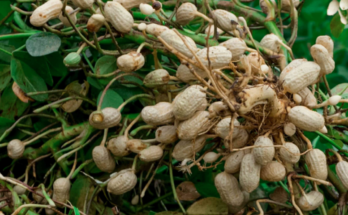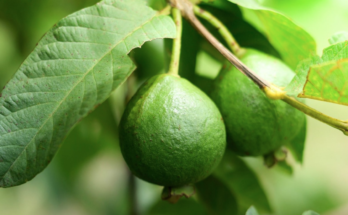Welcome to my guide on How to Grow Bananas in Florida. Growing bananas in Florida can be an exciting and rewarding endeavor.
In this comprehensive guide, I’ll share expert tips and step-by-step instructions to help you successfully cultivate your banana plants in the unique climate of Florida.
From selecting the right varieties to nurturing the plants through proper care, join me on this journey to enjoy homegrown bananas right from your backyard!
The scientific name for the common banana plant is Musa. The common names for bananas include plantain, Cavendish banana, and dessert banana. The banana belongs to the family called Musaceae.
How To Grow Bananas in Florida?
Growing bananas in Florida is possible with the right conditions. First, select a suitable location with full sunlight and protection from strong winds. Ensure the soil is well-draining and rich in organic matter.
Choose the appropriate banana variety for your area, considering cold hardiness. Plant the banana pups or offshoots in a hole that’s twice as wide and deep as the root ball.
Provide regular watering and fertilization to support growth. Protect young plants from cold temperatures by covering them. With proper care and attention, you can cultivate delicious bananas right in your Florida backyard.

History
The history of bananas traces back thousands of years to Southeast Asia. They spread to Africa around 3000 years ago and later to the Americas during the voyages of exploration.
Bananas have become widely distributed globally, with major producers including countries in Asia, Africa, and Latin America. They’re now a staple in many cuisines worldwide.
Plant Description
Banana plants are large, herbaceous perennials characterized by their massive, paddle-shaped leaves that unfurl from a central stalk. The plants can vary in height, with some reaching up to 30 feet tall.
Their trunk-like structures are pseudo stems formed by tightly packed leaf bases. The plant produces inflorescences that develop into clusters of fruit known as hands.
Each hand typically contains multiple individual bananas, or fingers, covered in a peel that ranges from green to yellow when ripe.

Soils
Bananas thrive in well-draining soils that are rich in organic matter. They prefer soils with good moisture retention but can tolerate a range of soil types, including sandy loam or clay as long as they don’t become waterlogged.
The optimal soil pH for bananas ranges between 5.5 and 7.0.
Environmental Factors
Several environmental factors significantly impact banana growth
1. Temperature: Bananas prefer warm climates and thrive in temperatures between 77°F to 86°F (25°C to 30°C). Cold temperatures, especially frost, can damage or kill banana plants.
2. Sunlight: Bananas require plenty of sunlight for optimal growth. Full sun exposure fosters robust development.
3. Water: Adequate and consistent moisture is crucial. Bananas need regular watering, especially during dry periods, but they are also sensitive to waterlogged conditions.
4. Wind: Protecting banana plants from strong winds is essential. Winds can damage leaves and affect the overall growth of the plant.
5. Humidity: While they prefer high humidity, bananas can still grow in drier conditions, although consistent humidity aids healthier growth.

Varieties
There are various banana varieties, each with its unique traits and uses
1. Cavendish: Commonly found in supermarkets, known for its sweet taste and yellow color when ripe.
2. Plantains: Larger and starchier than dessert bananas, often used for cooking when green and firm or for their sweetness when ripe.
3. Lady Finger (or Finger Bananas): Smaller in size and sweeter in taste, popular in desserts.
4. Red Bananas: Characterized by their reddish-purple skin and sweet flavor.
5. Burro Banana: Short and chubby, with a lemony tang when ripe.
6. Pisang Raja: A type of banana with a unique creamy texture and sweet taste, popular in Southeast Asia.
7. Blue Java (Ice Cream Banana): Known for its ice-cream-like texture and taste when ripe.
These varieties showcase the diversity in flavor, size, and texture among bananas, catering to various culinary preferences.

Comments On Selected Banana Cultivars in Florida
Here are comments on some selected banana cultivars that perform well in Florida:
1. Dwarf Cavendish: Widely cultivated in Florida due to its adaptability and ability to produce delicious fruit, provided it’s shielded from freezing temperatures.
2. Pink Velvet Banana (Musa velutina): This cultivar stands out for its ornamental value, producing vibrant pink fruits, and adding a unique aesthetic to gardens. However, it’s primarily ornamental and less sought after for consumption.
3. Japanese Fiber Banana (Musa basjoo): Known for its exceptional cold-hardiness, surviving sub-zero temperatures, making it a reliable choice in regions with occasional colder spells.
4. Black Thai (Musa balbisiana): Another cold-hardy option, though mainly ornamental and not typically favored for consumption due to taste or texture.
5. Lady Finger: A favored cultivar among enthusiasts for its smaller size, sweet taste, and versatility in desserts and culinary uses.
In Florida’s diverse climate, these cultivars showcase different strengths, from cold resilience to culinary appeal and ornamental beauty, offering options for both aesthetics and taste preferences.
Here’s Guidance on Planting Banana Plants in Various Soil Conditions and Site Selection
1. Site Selection and Spacing: Choose a sunny spot sheltered from strong winds. Maintain a spacing of about 8 to 10 feet between each plant to allow for their broad leaf growth and ensure proper airflow.
2. Planting in Sandy Soil: In sandy soil, amend it with organic matter like compost or well-rotted manure to improve moisture retention and fertility. Ensure good drainage to prevent waterlogging, which can harm the roots.
3. Planting in Rockland Soil: For rocky or compacted soil, create planting holes with extra care, breaking up the soil and incorporating organic matter to improve fertility and drainage. This preparation facilitates root growth and water absorption.
4. Planting on a Mound: In areas prone to waterlogging or if the soil doesn’t drain well, consider planting on a raised mound or hill. Mounding improves drainage, preventing water accumulation around the roots, which can cause rot.
Regardless of soil type, ensure the hole for planting is twice as wide and deep as the root ball. After planting, water thoroughly and add mulch around the base to retain moisture and suppress weed growth.
Regular watering, especially during dry spells, is crucial for the establishment of banana plants.

Care Of a Banana Plant
Here’s a breakdown of care for banana plants focusing on fertilizer, irrigation, and weed control.
1. Fertilizer: Use a balanced fertilizer regularly to nourish banana plants. Opt for formulations high in potassium (K), which encourages fruiting.
Apply fertilizers every two months, starting with half a pound of 6-2-12 fertilizer for young plants and gradually increasing to five pounds during flowering and fruiting stages.
2. Irrigation (Watering): Maintain consistent moisture in the soil without waterlogging. Water banana plants regularly, especially during dry periods, ensuring the soil remains moist but not saturated.
In sandy soil, frequent watering might be necessary to prevent dryness.
3. Weed Control: Apply mulch around the base of the plant to inhibit weed growth. Regularly remove any weeds that emerge near the banana plants to prevent competition for nutrients and water.
4. Pruning: Remove dead or damaged leaves regularly to promote airflow and prevent diseases. Prune spent flower stalks after fruiting.
5. Protection from Cold: Shield plants from freezing temperatures by covering them or providing additional insulation during winter months to prevent damage to the plant.
Diseases, Insects, And Nematode Problems
Banana plants can face various issues with diseases, insects, and nematodes.
Diseases: Common diseases affecting bananas include Panama disease (caused by a soil-borne fungus), leaf spot diseases like Sigatoka, and bacterial wilt.
These can cause leaf discoloration, wilting, and reduced fruit quality. Proper sanitation, good drainage, and disease-resistant varieties can help manage these issues.
Insects: Pests such as aphids, thrips, and banana weevils can infest banana plants, causing damage to leaves, stems, and fruits. Regular inspection and prompt treatment using insecticidal soaps or neem oil can help control these pests.
Nematodes: Nematodes, especially the root-knot nematode, can damage banana roots, leading to stunted growth and reduced yields.
Planting nematode-resistant varieties and employing crop rotation practices can mitigate nematode problems.
Maintaining good cultural practices, ensuring proper drainage, regular inspection, and timely application of appropriate treatments or pesticides, when necessary, are essential for managing these issues and preserving the health of banana plants.
Harvesting
Harvesting bananas involves several steps
1. Monitoring Fruit Maturity: Bananas are typically harvested when they reach the desired stage of ripeness based on the variety. They’re usually picked when green and begin to develop yellow hues, but specific cultivars may have different indicators of ripeness.
2. Cutting the Fruit: Use a sharp knife to cut the entire hand (cluster of bananas) from the plant. Avoid damaging other developing hands while harvesting.
3. Handling with Care: Handle the harvested fruit gently to prevent bruising or damage.
4. Ripening: If harvested green, bananas can ripen off the plant at room temperature. Placing them in a paper bag with an apple or ripe banana can speed up the ripening process due to the ethylene gas produced.
5. Storing: Store ripe bananas at room temperature to maintain their quality. Refrigeration can slow down ripening but may darken the peel (although the fruit inside remains unaffected).
By following these steps, you can effectively harvest and handle bananas to ensure the best quality and flavor.
FAQ
Can I grow bananas in any part of Florida?
Yes, bananas can thrive in most areas of Florida, but protection from frost is crucial.
What’s the best variety to grow in Florida?
Varieties like Dwarf Cavendish and Lady Finger do well in Florida’s climate.
How much sunlight do banana plants need?
Bananas thrive in full sun, so aim for at least 8 hours of direct sunlight daily.
When should I harvest bananas in Florida?
Harvest when the bananas start to turn yellow but are still slightly green at the tips.
How do I protect my banana plants from cold spells?
Shield plants during freezes by covering them with blankets or utilizing frost cloth.
Conclusion
So, growing bananas in Florida is an adventure worth taking! From selecting the right varieties to providing the ideal care, the journey of cultivating these tropical delights in your backyard is both rewarding and achievable.
Embrace the lush, oversized leaves and the anticipation of that first ripe bunch—it’s a true testament to the wonders of gardening in Florida’s unique climate.
So, roll up your sleeves, grab your shovel, and get ready to enjoy the sweet taste of success as you nurture your very own banana oasis in the Sunshine State!



